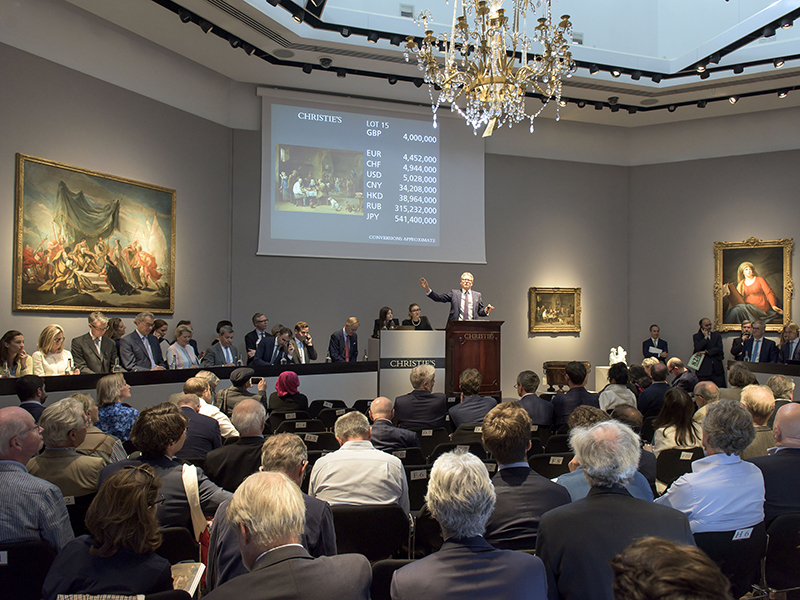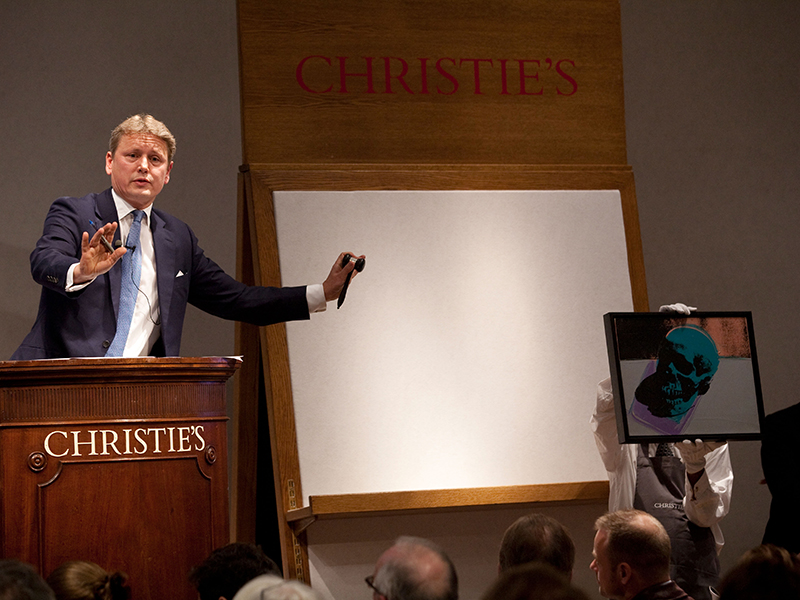That’s Your Lot: A Guide to Selling Art at Auctions
If you’re wondering how to go about putting that once-favorite piece up for sale, our guide to selling your art at auction has everything you need to know
If you’re wondering how to go about putting that once-favorite piece up for sale, our guide to selling your art at auction has everything you need to know
For years you’ve loved the Hockney print that you bought at a charming New York gallery you visit whenever you are in town, and it still hangs in one of your guest rooms. But times change and, as you consider a change of decor, maybe it’s time to pass it on to another collector.
But how do you go about selling a cherished work of art? How do you know how much it might be worth, and where might be the best place to sell it? As with most questions posed by 21st-century living, Google has some of the topline answers. See if any similar pieces are on the market, either at a gallery or at auction, and check their price tags. And see if an artist’s “stock” is up or down in the art press. You could also buy a one-day pass to Artnet’s Price Database for access to more than 12 million color art auction records dating back to 1985.

Jonathan Stone, Deputy Chairman of Asia and Co-Chairman of Asian Art at Christie’s, recommends studying reports issued by major art fairs and institutions, such as Art Basel and Hiscox, “to have a better understanding of how the global market is performing.” Stone also steers potential consignors (see glossary below) to christies.com, to check sale records in the category they wish to sell in.
Last year, the world’s leading auction houses sold more than $12 billion worth of art, with sales at Christie’s accounting for more than half ($7 billion). “Selling at auction can maximize the outreach to a global client base and leverage extensive resources to best promote objects through global marketing, social media, preview tours, and art forums,” says Stone.
Gemma Sudlow, Vice President, Specialist Head of Private & Iconic Collections, Christie’s New York, adds: “At any given time of year we can find a suitable auction… Consigning your work to a gallery requires finding the right place for what you have and then, potentially, a considerable wait time with no guaranteed date of sale.”

The first thing you need to do in order to become a consignor with Christie’s is ascertain whether the house would be willing and able to sell your piece. You can either do this face to face, via appointment (you must supply a photo of the work first), or online by submitting up to three images and information about what you want to sell—the artist, medium, dimensions, and provenance, along with scans of any associated documentation you may have. Christie’s experts will review your submission (free of charge) and come back to you with estimates within four to six weeks.
The experts will then work with you to develop a personalized sales strategy. They’ll explain the commission you will have to pay on a sale, and discuss the best way to sell—in the saleroom, via a private sale, or in an online auction. To attract millennial and emerging buyers, for example, an online-only auction might be best, while a private sale allows you to sell works outside of the auction calendar. A private sale also enables consignors to keep the sale low profile. It’s worth noting that valuations can change once an expert has a piece in front of them. Try to give as much detail as possible when you send in the initial photographs.
Once you’ve signed a seller’s agreement you will need to have your artwork delivered to a Christie’s saleroom or warehouse. Christie’s can arrange this for you, should you wish. The auction house will then photograph and catalog your property, and work out the best way to market it to potential buyers around the world. If you put your work in a public sale you may have to wait until a relevant sale comes up. Check christies.com for auction schedules.
We specialize in ensuring that property is well-estimated, positioned well in the right sale context, and has creative marketing around it—that’s why we achieve outstanding results for our vendors
“Items that are fresh to the market or have great provenance are the pieces that tend to exceed expectation. We specialize in ensuring that property is well-estimated, positioned well in the right sale context, and has creative marketing around it—that’s why we achieve outstanding results for our vendors,” observes Sudlow.

Before the sale, a specialist Christie’s team reviews interest on the lot and agrees a reserve price with the seller. Many who sell art at a live auction like to attend the sale in person, though you can also watch remotely via Christie’s LIVE. “An auction generates a sense of urgency and excitement in bidding that helps maximize the sale return to the seller,” observes Stone. “It also ensures transparency while retaining the confidentiality of the seller and the buyer, unless they wish to be public.”
An auction generates a sense of urgency and excitement in bidding that helps maximize the sale return to the seller
After the sale you’ll receive notification of how much your artwork finally sold for. The auction house will then confirm your net proceeds based on the hammer price, taking the seller’s commission into account. Christie’s will then secure payment from the buyer, after which (typically around 35 days after the auction) your funds will be transferred to your nominated bank account, just in time for your next visit to New York, perhaps.
1. Consignor
The person who is selling property via the auction house.
2. Property
The item or group of items being put up for sale.
3. Provenance
A history of the item and how you acquired it.
4. Lot
An object or group of objects offered for sale as a single unit.
5. Reserve price
The confidential agreed minimum price. Your item will not be sold for less than this.
6. Bid
An offer on a lot from a potential buyer.
7. Fair warning
An indication that the hammer is about to come down on a lot.
8. Hammer price
The price at which the auctioneer’s hammer falls, and at which he or she declares an item “sold.”
9. Buyer’s premium
The amount above the hammer price that must be paid as part of the total purchase price.
10. Seller’s commission
A commission paid by the consignor to the auction house, which is deducted from the hammer price.